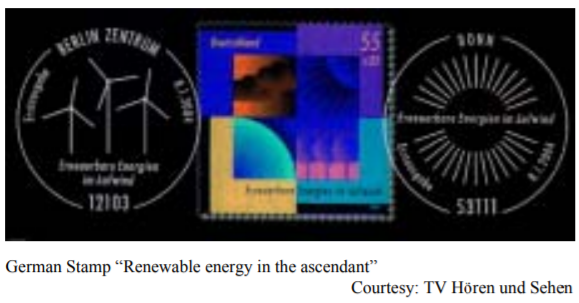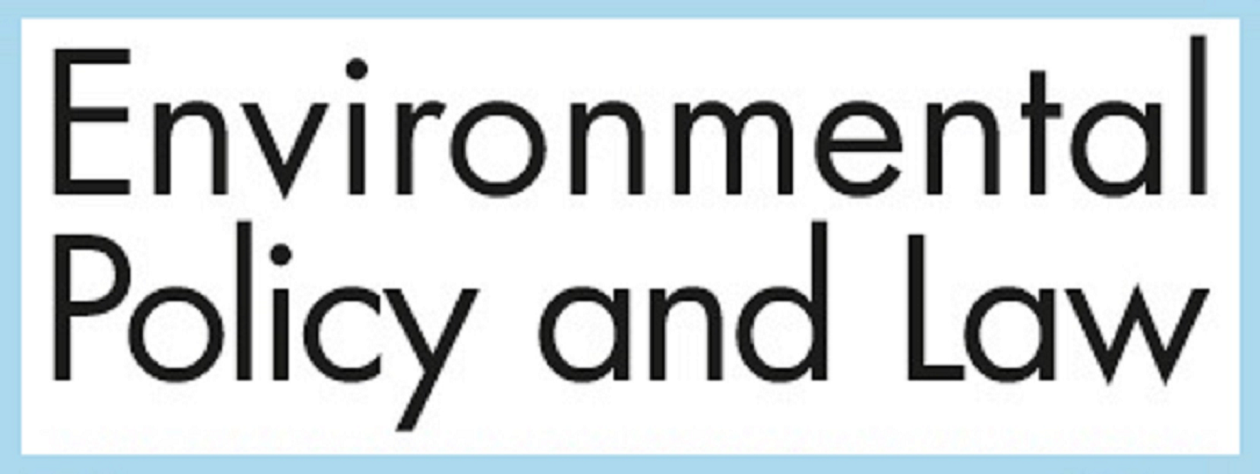Clean Energy and Sustainable Development
Mohamed T. El-Ashry*
UN Foundation, New York, NY, USA
*Corresponding author
EPL, Vol. 35, Iss.2, pp.92-94, 2005
Mohamed T. El-Ashry*
UN Foundation, New York, NY, USA
*Corresponding author
EPL, Vol. 35, Iss.2, pp.92-94, 2005
Presented at the Haub Award Ceremony, Pace University, 8 March 2005
Introduction
Pursuing a more sustainable global future is less a matter of cost than of conscience, commitment and cooperation. Humanity, greater in number and more economically active with each passing day, is increasingly playing havoc with the Earth’s natural systems. Our actions are giving rise to a multitude of critical threats: the degradation of soils, water and the marine resources essential to food production; health-endangering air and water pollution; global climate change that is likely to disrupt weather patterns and raise sea levels everywhere; the loss of habitats, species and genetic resources which is damaging both ecosystems and the services they provide; and the depletion of the ozone layer.
The sorry state of the planet and of sustainable development is not because of lack of international attention. In fact, since 1992, the response of the international community to the challenges of the environment and sustainable development included four international summits, four ministerial conferences, four international environmental conventions, two protocols, adoption of the Millennium Development Goals (MDGs) and promises for additional finance to help achieve them, and the establishment of a new financial entity – the Global Environment Facility (GEF).
On the face of it, these are remarkable achievements. But despite all of the high-powered gatherings, agreements and commitments, little progress has been achieved in improving the environment and in pursuing sustainable development. Global environmental trends continue to be negative and the promise of significant financial resources to address the challenges of environment and development has not materialized. The gap between rich and poor within and between countries continues to widen; 90 million people are added to our global village every year, mostly in developing countries; one person in three still lacks adequate fresh water; greenhouse gases are steadily increasing; ecosystems that are critical for human survival continue to be undermined; and land degradation threatens food security and livelihoods in many regions, especially Africa. It is ironic that as the evidence for environmental degradation becomes more convincing, the political will for action becomes weaker or lacking.
The gap between rich and poor and the inequality of our world can also be seen from a satellite photo of the Earth at night. It reveals a world of light and darkness, of haves and have-nots – an illustration of the fact that almost two billion people still do not have access to modern energy services. This energy poverty, combined with the negative environmental and health impacts of conve.
and debate for almost two decades, and with little progress as well. Since Rio, there has been an international consensus that energy is essential to achieving the economic, social and environmental pillars of sustainable development. But experience has shown that the kind of energy and the way it is used are important determinants of the degree of sustainability achieved Last month, in its report “Energy and Sustainable Development”, the International Energy Agency (IEA) said: “No matter how we define sustainable development, current systems of energy supply and use are clearly not sustainable in economic, environmental or social terms”. In the “business as usual” scenario, the IEA shows that, in the absence of new policies by governments and international financial institutions, the world’s energy needs will be almost 60 per cent higher in 2030 than they are now. And as you might have guessed, CO2 emissions will also increase at about the same rate. Clearly, continuing along the current path of energy development is not only incompatible with sustainable development objectives but also means that the world’s vulnerability to supply disruptions will increase as international trade and competition expand.
Sustainable energy future
Recognizing that decisions taken now will be decisive for a transition towards a sustainable energy future, world leaders gathering in Johannesburg for the World Summit on Sustainable Development (WSSD) concluded that eradicating poverty is an indispensable requirement for sustainable development and called for a substantial increase “with a sense of urgency” of the global share of renewable energy in the total energy supply. There is a broad consensus that the substantial expansion of renewable energy is a win–win proposition for developed and developing countries alike; it provides opportunities for poverty eradication and for satisfying energy needs in rural and remote regions; it helps generate employment and local economic development opportunities; it helps curb global warming and contributes to the protection of human health by decreasing by air pollution; and it enhances energy security through reliance on domestic energy sources such as biomass, hydro, wind, solar and geothermal. At the same time, clean energy is one of the key elements for simultaneously achieving the Millennium Development Goals for eradicating poverty and hunger, achieving universal primary education, promoting gender equality, improving health, combating communicable diseases, and ensuring environmental sustainability.
In this regard, the IEA’s “business as usual” scenario which I referred to earlier shows that the number of people without modern energy services in 2015 is only fractionally lower than in 2002. Alternatively, in a scenario where the MDGs poverty target is assumed to be met, modern energy services are provided to an additional half a billion people in 2015. That is estimated to cost about $200 billion which suggests that, at current policy and financial commitment levels, the poverty reduction target is highly unlikely to be met. It is clear that current energy policies by governments and international institutions have not contributed in a significant way to sustainable energy or to improving access to energy services. At the same time, the gap between financial needs and available resources for energy development has widened since the commitments of Rio in 1992. Both ODA and Foreign Direct Investments (FDI) have declined in the last decade.
Last year, as a follow-up to Johannesburg’s Plan of Implementation, and in anticipation of CSD 14/15’s deliberations on energy in 2006 and 2007, two major international conferences on clean energy and development were convened in Europe. In June, Germany convened Renewable Energies 2004, which I had the honour to facilitate, and in December, the Netherlands convened Energy for Development 2004. Both conferences, which in cluded ministers and high-level representatives from governments, international institutions, the private sector and civil society, agreed on a number of policy recommendations for advancing the transition to sustainable energy systems and to increasing access to energy services.
Key policy highlights
Allow me to highlight some key policy recommendations based on the experience of the GEF in funding renewable energy projects in developing countries, as well as from the two European conferences. These policy recommendations recognize the diversity among countries and regions and the fact that no single policy instrument can ensure solutions for every application, sector or subsector, socio-political situation, or country. They include: (1) developing coherent policies that support the development of markets for clean energy technologies; (2) removing barriers and levelling the playing-field for clean energy and renewables by internalizing external costs and by phasing out energy subsidies that distort markets; (3) establishing regulatory and legal frameworks in developing countries and reducing regulatory uncertainty in order to encourage private investment; (4) strengtheningthe human and institutional capacity required to transform energy markets in developing countries and establishing the conditions for attracting private investment for clean energy; (5) developing ways of channelling microfinance to support the extension of access to clean energy for the rural poor; and (6) establishing clear objectives and targets for clean energy, especially renewables, in the portfolios of international financial institutions like the World Bank and the Regional Development Banks.
Besides the need for a substantial increase in the use of clean and renewable energy technologies, the technical and economic potentials of improving energy efficiency are enormous. In a number of countries, energy efficiency can be the most economic way to meet the growing demand for energy services. The IEA estimates the overall potential of cost-effective energy efficiency gains in developing countries at 30–45 per cent, which could result in major economic and developmental benefits. I would be remiss if I did not talk briefly about the GEF in the context of building markets and removing barin partnership with governments, international institutions, the private sector and NGOs in expanding the introduction of renewable and clean energy technologies in developing countries. Its clean energy portfolio has grown to more than $1.8 billion in grants that leverage more than $9 billion in public and private finance in 50 countries.
From the beginning, we recognized the importance of renewable energy for sustainable development, particularly in rural areas that are not and will not in the foreseeable future be connected to a grid. The productive use of renewable energy in rural areas helps raise incomes and improve health. Pumping water for irrigation, power for drying crops, energy for cottage industries, and lighting in schools and hospitals are some of the important applications of renewable energy for rural and remote areas. Through more than 110 projects, the GEF deals with problems hampering the transformation of markets for renewable energy, i.e. the lack of supportive policy frameworks, inadequate financing for installations or supporting businesses, lack of technical capacity, and lack of awareness and trust in the technologies by users and utility companies.


This includes only short extracts from the original article; view in full via the link below.
